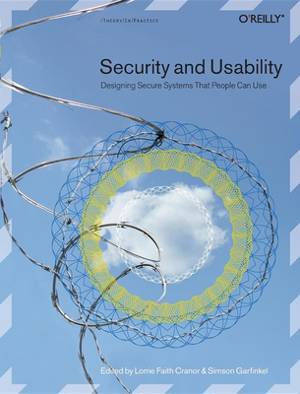
- Afhalen na 1 uur in een winkel met voorraad
- Gratis thuislevering in België vanaf € 30
- Ruim aanbod met 7 miljoen producten
- Afhalen na 1 uur in een winkel met voorraad
- Gratis thuislevering in België vanaf € 30
- Ruim aanbod met 7 miljoen producten
Security and Usability
Designing Secure Systems That People Can Use
Lorrie Faith Cranor, Simson GarfinkelOmschrijving
But there is a growing recognition that today's security problems can be solved only by addressing issues of usability and human factors. Increasingly, well-publicized security breaches are attributed to human errors that might have been prevented through more usable software. Indeed, the world's future cyber-security depends upon the deployment of security technology that can be broadly used by untrained computer users.
Still, many people believe there is an inherent tradeoff between computer security and usability. It's true that a computer without passwords is usable, but not very secure. A computer that makes you authenticate every five minutes with a password and a fresh drop of blood might be very secure, but nobody would use it. Clearly, people need computers, and if they can't use one that's secure, they'll use one that isn't. Unfortunately, unsecured systems aren't usable for long, either. They get hacked, compromised, and otherwise rendered useless.
There is increasing agreement that we need to design secure systems that people can actually use, but less agreement about how to reach this goal. Security & Usability is the first book-length work describing the current state of the art in this emerging field. Edited by security experts Dr. Lorrie Faith Cranor and Dr. Simson Garfinkel, and authored by cutting-edge security and human-computer interaction (HCI) researchers world-wide, this volume is expected to become both a classic reference and an inspiration for future research.
Security & Usability groups 34 essays into six parts:
- Realigning Usability and Security---with careful attention to user-centered design principles, security and usability can be synergistic.
- Authentication Mechanisms-- techniques for identifying and authenticating computer users.
- Secure Systems--how system software can deliver or destroy a secure user experience.
- Privacy and Anonymity Systems--methods for allowing people to control the release of personal information.
- Commercializing Usability: The Vendor Perspective--specific experiences of security and software vendors (e.g., IBM, Microsoft, Lotus, Firefox, and Zone Labs) in addressing usability.
- The Classics--groundbreaking papers that sparked the field of security and usability.
This book is expected to start an avalanche of discussion, new ideas, and further advances in this important field.
Specificaties
Betrokkenen
- Auteur(s):
- Uitgeverij:
Inhoud
- Aantal bladzijden:
- 738
- Taal:
- Engels
- Reeks:
Eigenschappen
- Productcode (EAN):
- 9780596008277
- Verschijningsdatum:
- 4/10/2005
- Uitvoering:
- Paperback
- Formaat:
- Trade paperback (VS)
- Afmetingen:
- 178 mm x 232 mm
- Gewicht:
- 1052 g

Alleen bij Standaard Boekhandel
Beoordelingen
We publiceren alleen reviews die voldoen aan de voorwaarden voor reviews. Bekijk onze voorwaarden voor reviews.











